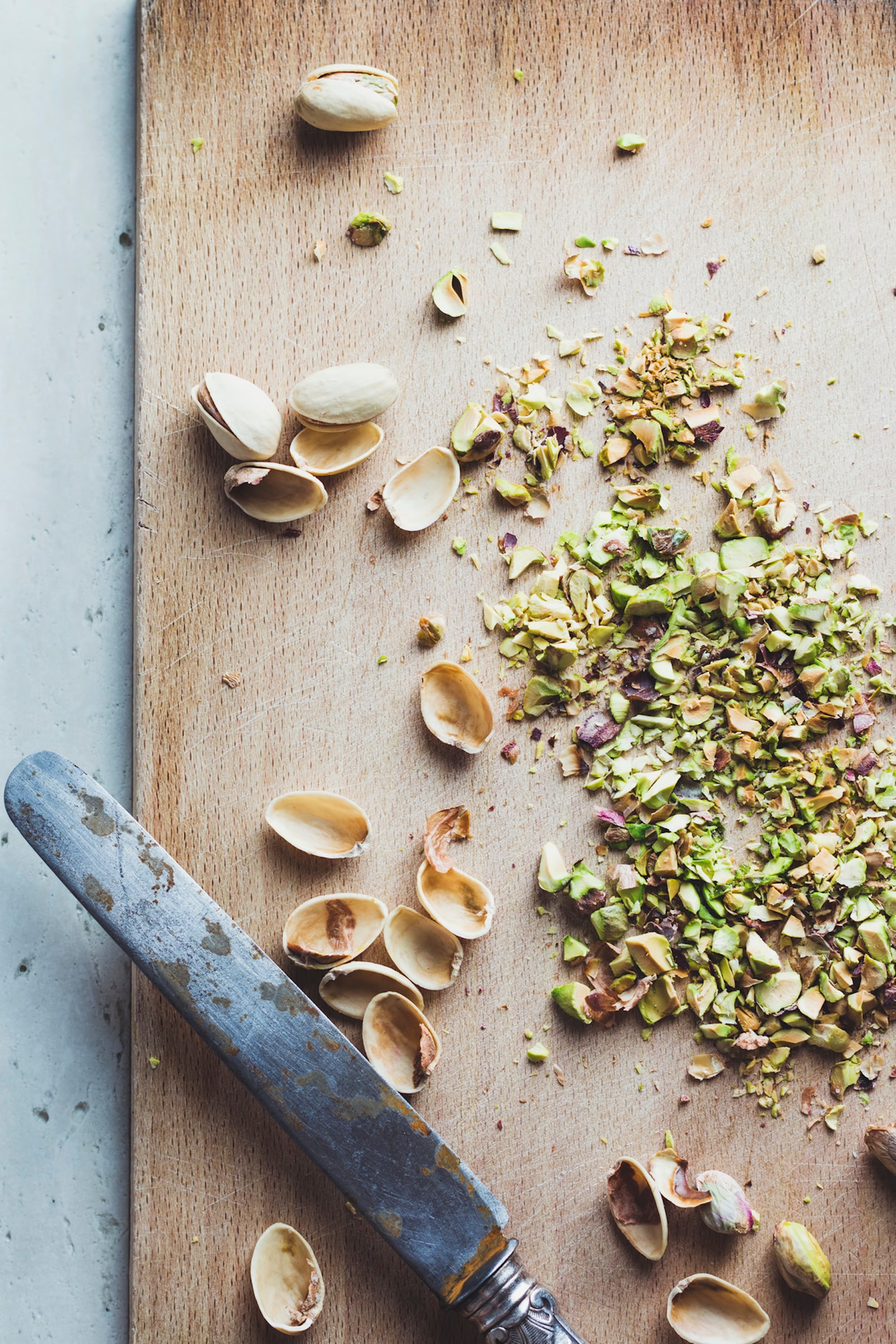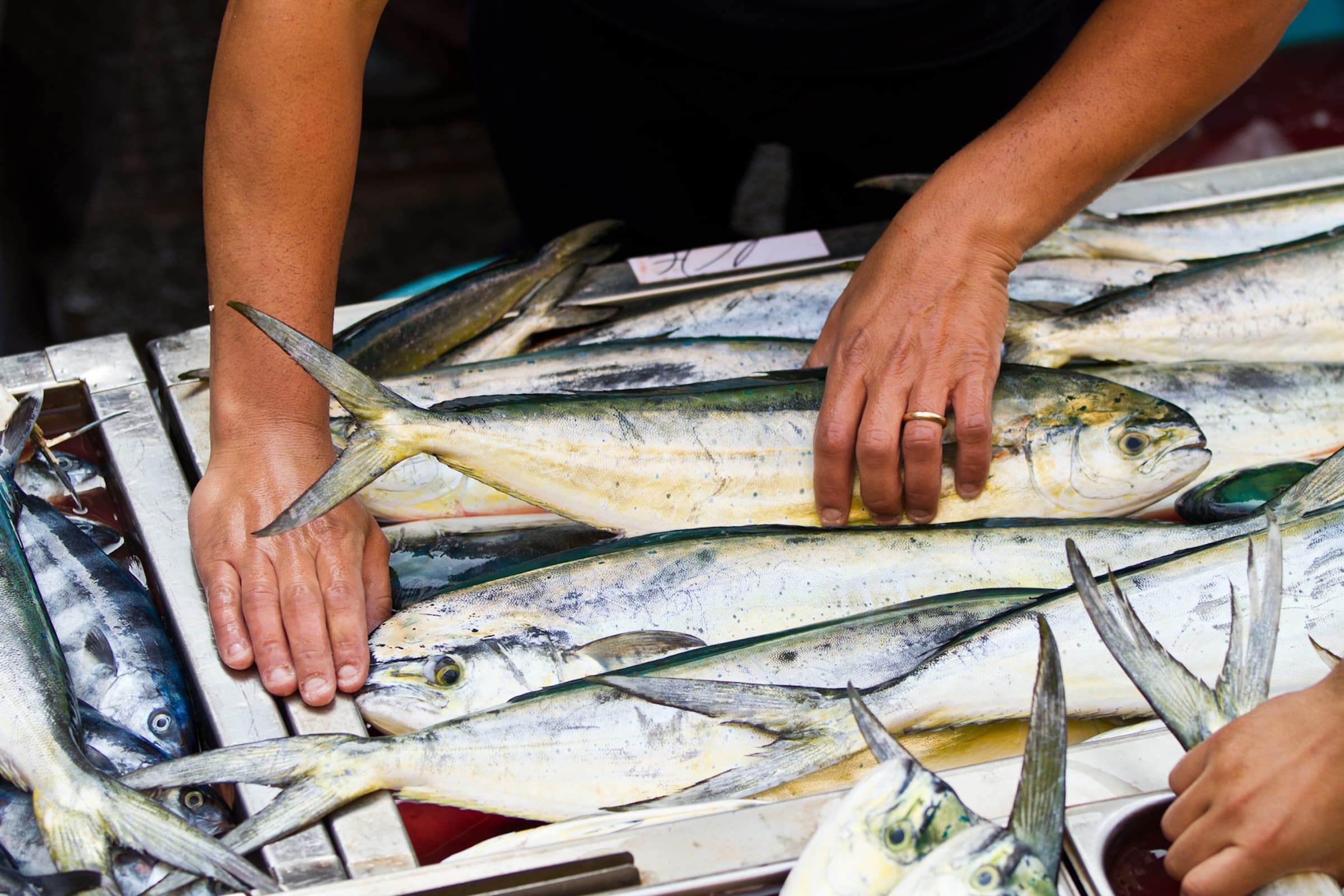Table of Contents
Eating Sicilian food is like taking a bite out of history.
When you visit the island at the toe of mainland Italy’s boot, you’ll encounter several Sicilian dishes not found in the rest of Italy.
That’s because the Arabs and Spaniards both ruled Sicily, and Greek colonists settled portions of the island.
Top Sicilian Food Destinations
To experience some of Sicily’s most iconic food, we say head there IRL. Consider this your guide to the must-visit food stops when you travel to Sicily!
Avola For Almonds
People believe almonds arrived in Italy around 1,000 B.C. when winds directed a Greek boat to Sicily (rather than Puglia, its intended destination). Since then, le mandorle di Avola, or almonds of Avola, has become a staple of Sicilian cuisine.
Avola produces three types of almonds: Pizzuta, Fascionello, and Romana. These almonds grow best in areas where frost rarely occurs, and since Sicily—and Avola in particular—gets a lot of sun, these almonds thrive.
Aside from beverages like almond milk, taste test these local almonds in Sicilian desserts like granita, marzipan, ice cream, pastries, or Jordan almonds, which are locally called “confetti.”
Bagheria For Sfincione
Sfincione (pronounced “sfeen-cho-nay”) is a common type of Sicilian pizza. Unlike Neapolitan pizza that’s ultra-thin, this crust looks and feels more like focaccia. Restaurants typically bake and cut pieces into rectangles and serve them loaded with toppings.
A few varieties of sfincione exist. In Bagheria, the pizza is topped with olive oil, anchovies, some fresh cheese, breadcrumbs, and then some onions, scallions and oregano. Because the tomato didn’t arrive in Sicily until the 15th or 16th century, this sfincione Bagherese without tomatoes is regarded as the most traditional type.

Bronte For Pistachios
Bronte pistachios have earned the nickname “green gold,” along with a protected designation of origin certificate since 2009. With a sweet, fruity taste, a chewy consistency, and a striking emerald color, they are a prized ingredient, that also tastes outstanding.
The Arabs brought pistachio trees to Sicily, and here it has flourished. It’s because of their influence that Sicilians call pistachios frastuca, taken from the Arab word fustuq.
Pistachio trees do remarkably well on the island’s rough terrain and volcanic soil. And, while a newly planted pistachio tree can take a decade before bearing fruit, the plant can live for hundreds of years. You’ll find Bronte pistachios in salads, in pesto sauce, in pasta, and in sweets, such as adorning cannoli or in gelato.
Catania For Sicilian Blood Oranges
Sicilian blood oranges have a subtly sweet flavor packed with notes of tangy grapefruit and tart cherries and raspberries.
The fertile soil around Mt. Etna provides ideal conditions for blood oranges to thrive. Grown in Catania and some villages around Enna and Siracusa, these vibrant fruits are so beloved they’ve even earned a PGI Mark (Protected Geographical Indication) from the European Union.
You’ll encounter three types in Sicily: Moro, Tarocco, and the Sanguinello or sanguigno. Typically they ripen in winter, so they’re readily available from December until about March. If you’re in Sicily in February, you can even stop by Palagonia to attend the Blood Orange Festival and get your fill of this citrus fruit.
Want a taste of Sicily’s blood oranges at home? Check out our recipes for a Blood Orange Pomegranate Sparkling Cocktail or Aperol Spritz Punch.

Marsala For Marsala Wine
Sicily has a long history of winemaking (since the 8th century B.C.), and the unique terroir of the island makes Sicilian wine an absolute delight. You should absolutely try any and all the varieties when you go—Nero d’Avola, Grillo, and more. But, without a doubt, Marsala is the most well-known wine from Sicily.
Grown in Marsala on the western part of the island, this wine (fortified typically with brandy) comes in both a sweet and dry style. Recipes sometimes call for Marsala due its tasting notes of nuts, dried fruit, and brown sugar, but it makes for a delightful aperitif or dessert wine.
Marsala has earned its Denominazione di Origine Controllata (DOC), so when in Marsala be sure to indulge. It pairs well with cheeses, nuts, olives, and chocolate.
Messina For Granita
What is granita? Not quite as velvety as gelato yet not as crunchy as an Italian ice, this sweet treat has a texture that’s simultaneously smooth and a little grainy. Its origins date back to the Arab rule of Sicily when the recipe for a flavored, sweetened, and then iced fruit juice arrived on the island.
With a simple ingredient list of sugar, water, and flavorings, granita tastes amazing on a hot Sicilian day. Since lemons grow in abundance on the island, limone is a very typical flavor, along with almond or pistachio.
In Messina, the coffee granita is a local product that earned the Denominazione Comunale di Origine, a certificate that designates certain food products.
Locals love to consume brioche con gelato or granita with a warm brioche, which is ideal for dipping. And this isn’t reserved just for dessert—a granita con brioche makes for a typical (and delicious!) breakfast.
Modica For Chocolate
When you open up a bar of Sicilian chocolate from the town of Modica, you might be surprised to find an inconsistent color or chocolate blooms. This is actually what you want from Cioccolato di Modica, and what makes it so desirable.
The Spaniards introduced chocolate production (which they likely learned from their conquest of modern-day Mexico) during their domination of southern Italy, from the 1400s to the 1700s. Chocolate from this region uses an original recipe where the chocolate and ingredients are ground together, and production includes no added cocoa butter. The product is processed cold, giving the finished product a slightly grainy texture and incredible aroma.
Modica chocolate crumbles beautifully, and you can enjoy it as is or in a hot drink.

Palermo For Food Markets
To experience local food culture firsthand, head straight to the food markets of Palermo. You’ll encounter street vendors selling fresh ingredients like vegetables and seafood alongside Sicilian street food classics like arancini rice balls, the fried chickpea flour bites known as panelle, or even the daring spleen sandwich known as Pane con la Milza, or “pani cà meusa” in local dialect.
These markets date back to the Saracen rule of the island in the ninth century. Sicily’s history of Arab rule and its proximity to Africa makes these markets unique from the rest of Italy in that they feel more like bazaars—a whirlwind of scents, colors, and sounds.
As the capital of Sicily and the island’s most populated city, Palermo has many markets to explore. But Ballarò, Capo, and Vucciria are the three most historic. The most centrally located market, Vucciria, makes an excellent first stop. Then, dive deeper into Sicilian life (and into stalls upon stalls of fresh produce and street food), by heading to Ballarò Mercato and Mercato del Capo.
Palermo For Torta Setteveli
Torta Setteveli cake, traditionally served at birthday parties, has seven decadent, delicious layers—hence the name, setteveli, or seven veils.
Combining chocolate mousse, praline, sponge cake, and hazelnut bavarois, all topped off with a chocolate mirror glaze. Three Italian chefs actually won the 1997 World Pastry Cup with this original recipe. While none of the winners were from Sicily, the cake gained popularity on the island (particularly in Palermo), so you’ll want to order some when you travel there.

Trapani For Sea Salt
For more than 1,000 years, Trapani has had protected salt pans that stretch out into the Mediterranean. Getting salt from this region is like getting a taste of history—salt production has existed here since the days of the Phoenicians.
Because of the clear water and sunny weather, Trapani salt has a mild, versatile flavor with a faint tanginess from the minerals.
If you’re extra curious about salt production while you’re there, pop into the Museo del Sale. There you’ll learn even more about the region’s history and the process for harvesting.
More Sicily Travel Tips
Head here for more Sicily food and travel tips:
Have Us Plan Your Italy Trip
Looking to travel to Taormina Italy? Our Italy travel planning services are here to help you achieve the ideal vacation. After discussing your preferences during a short consultation, we’ll plan your perfect itinerary. Head here to get started!
Photo Credit: Fish market in Catania and brioche with gelato by Renáta Török-Bognár; pistachios by Tatjana Zlatkovic; Trapani sea salt by Giulia Squillace; Sicilian blood oranges by Darren Muir
